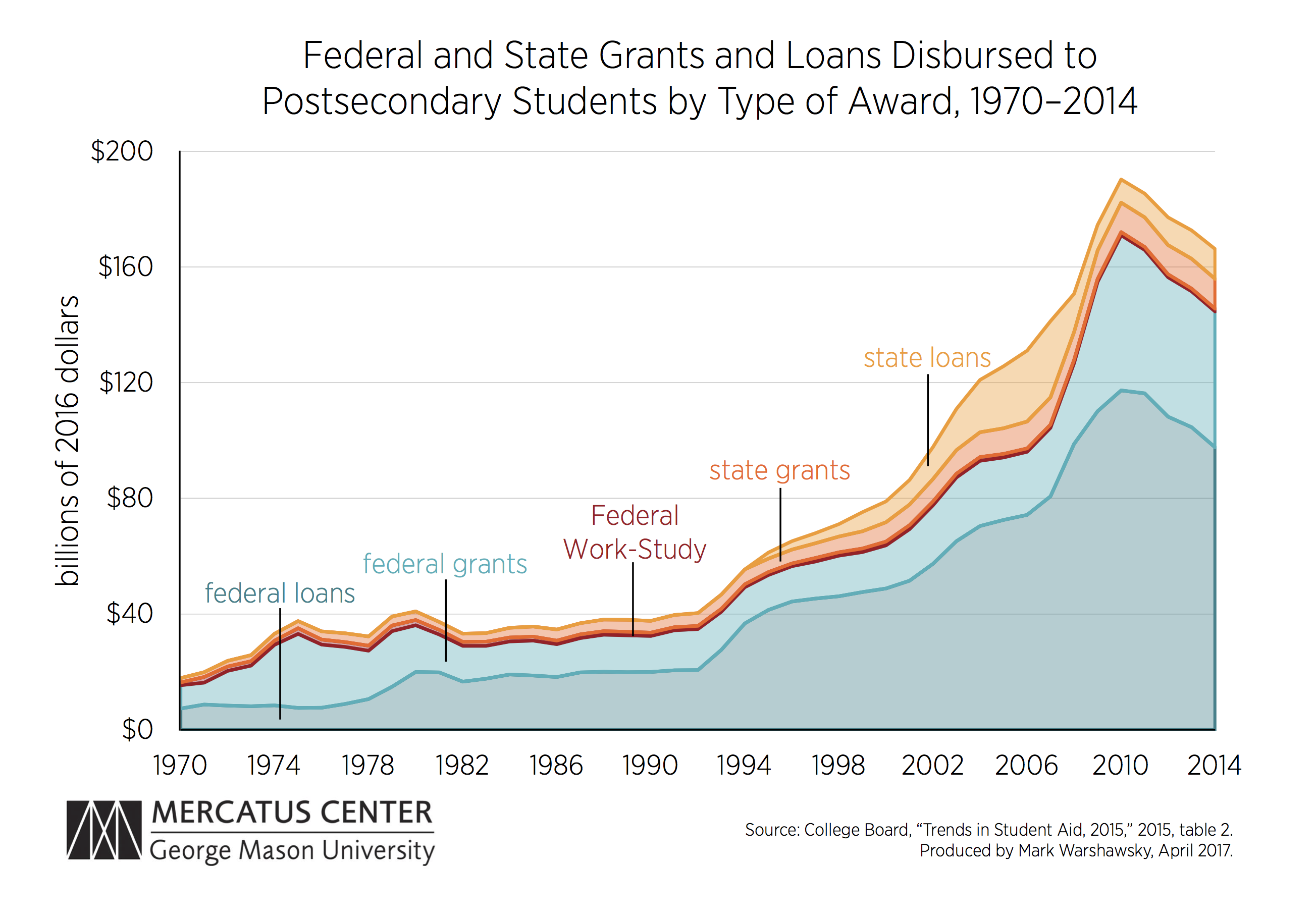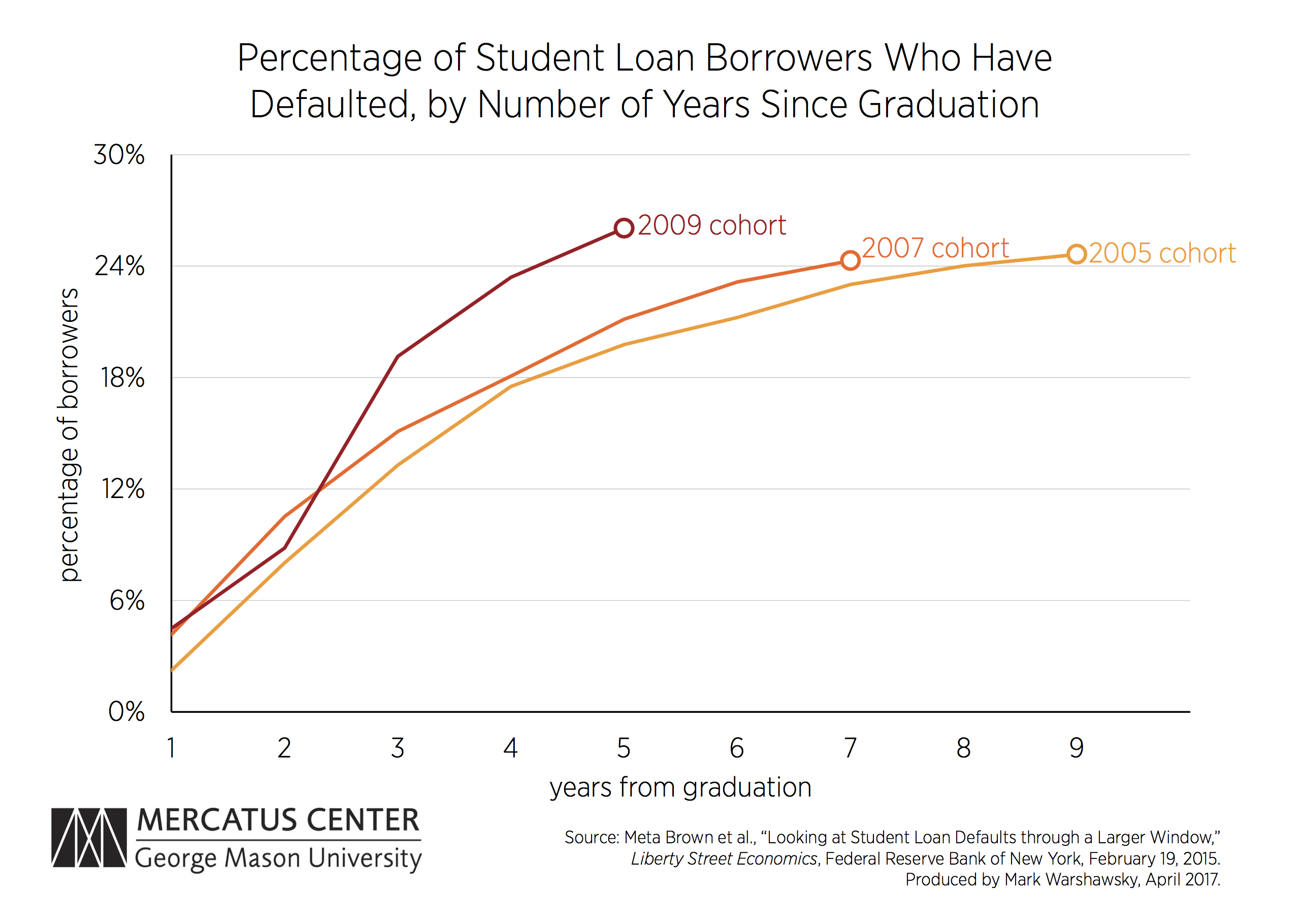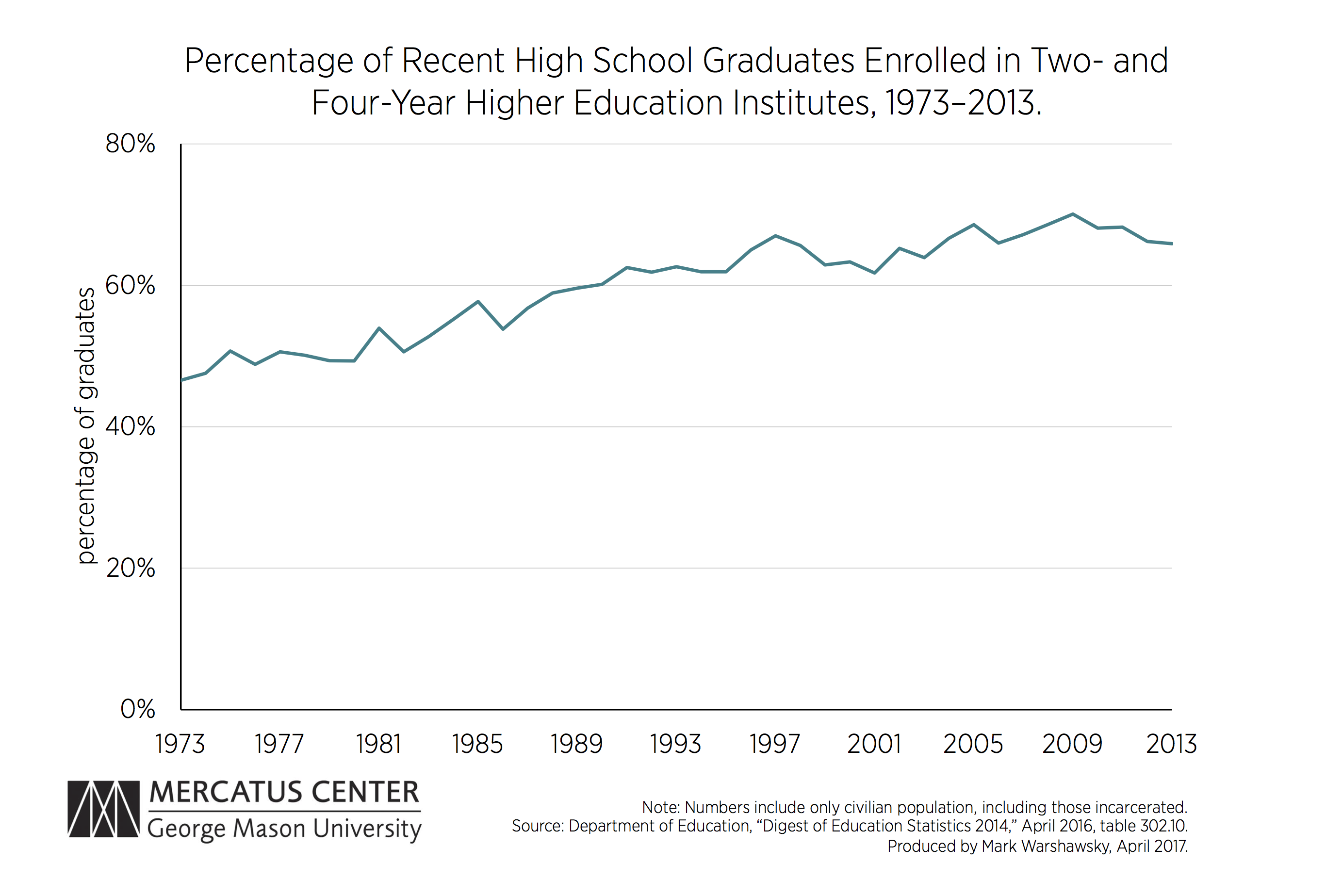"Conventional wisdom suggests that expansions in federal student aid will result in a more affordable and equitable postsecondary education system—a system that has seen tuition triple, in real terms, across American universities over the past four decades. This belief has motivated significant expansions of federal aid for students. However, the following charts show that increases in federal funding for higher education have done little to make college more affordable.
The first chart shows that average gross tuition and fees for undergraduate studies have increased more than threefold in constant dollars from 1980 to 2014—faster even than the rate of increase of healthcare prices.
At the same time, the second chart highlights the scale at which government support for higher education in the form of federal and state grants and loans has exploded since 1994, and especially since 2000. Grants and loans totaled almost $170 billion in 2014 (constant dollars), up from just over $50 billion in 1994. Many studies, including Lucca, Nadauld, and Shen (2015) and Turner (2012), consistently find that increased federal support for higher education leads to a significant increase in tuition and decrease in institutional aid.
Different measures of student loan default rates and repayment burdens uniformly show significant increases in recent years, across all types of institutions and students. Both two-year and three-year default rates have been on the rise since 2005. From the third chart we can also see that holding the number of years after graduation constant, students graduating in more recent years have significantly higher default rates than earlier cohorts.
Some students, particularly from nontraditional backgrounds, seem to have been harmed by the increase in federal funding of student loans. They have not seen increases in their incomes as workers, have often not completed their education, are more likely to default on their loans, and miss out on job-related income and training.
At the same time, as the fourth chart demonstrates, enrollment in higher education as a percentage of the young adult population and the supply of college-educated workers as a percentage of the workforce has steadily increased over the past four decades. For example, now almost 70 percent of recent high school graduates are enrolled in some type of college.
Further increases in federal support for higher education are not needed, and indeed are likely to be counterproductive, because they lead to higher tuition for all students. The resultant increase in tuition, decline in average student quality, and increase in student loan defaults should lead policymakers to question whether the massive increase in federal support for higher education is achieving its goals. A robust parallel system of on-the-job training, apprenticeships, and youthful practical work experience is needed, supported by changes in federal laws and regulations, such as lowering the minimum wage for younger workers."
Monday, April 10, 2017
Increased Federal Funding for Higher Education Produces Adverse Effects
By Mark J. Warshawsky of Mercatus.
Subscribe to:
Post Comments (Atom)




No comments:
Post a Comment
Note: Only a member of this blog may post a comment.